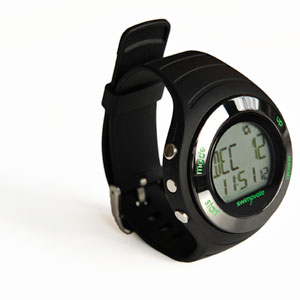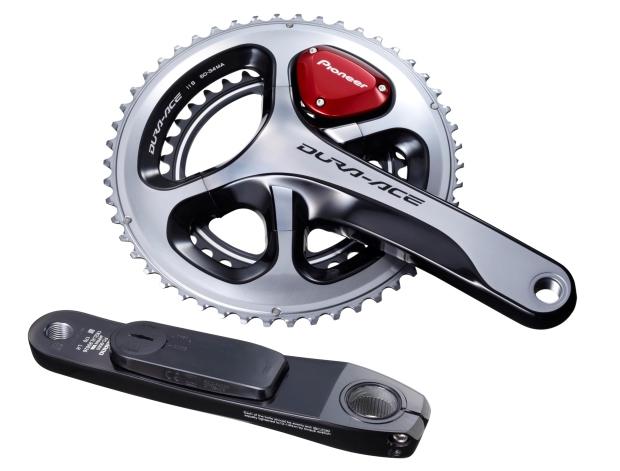Polar V800 first impressions
I know most of you will read this and the only question you want to know is, "Should I buy it?" Do you need to buy a new triathlon (or multi-sport) watch? Do you spend most of your time on your iPhone or IPad? Are you responsible for your own training and recovery? Do you have a BTLE (Bluetooth Low Energy) power meter? And do you consider this purchase an investment and commitment to continued training? If you answered "Yes" to these questions, you qualify. Go buy the Polar V800 and skip reading the rest of this article.
But let's say you currently have functioning (not always the case, in my experience) Garmin or Ant+ products (e.g., most power meters), have a coach who currently uses TrainingPeaks, you have and use Android based devices, and the thought of switching from Microsoft to Apple keeps you up at night, then you sit in the "it depends" group.
To provide some background on my perspective to those who fall under "it depends", I was a Garmin guy using the 910xt and Edge 500 along with my Quarq power meter, not to mention my Coach (Hi Steve B.) who looks after my recovery and plans using Training Peaks. However, after 3 Garmin 910xt replacements, a broken strap, service from Garmin below what I expected, and a good phone conversation with Wayne@Polar, I bit the bullet. I switched from Microsoft to Apple, well, that's how it felt.
It's been two weeks now and I must admit I am not sure why I waited so long. This is not to say the V800 is without issues as it is still developing on the firmware side, but I don't feel I made the wrong decision.
The V800 and its related software goes beyond where the Garmin 910xt left off and I believe it is the start of the next generation in terms of wearable training devices. The watch can be worn day-to-day, it's got a long lasting battery, the display is easy to read, it shows your recovery status, and it tracks your activity. You can access your training diary, favourite workouts or courses, and run various testing (e.g., Fit Test, Jump Test, Orthostatic Test), and it can all be analyzed on Polar's app. I never considered purchasing an activity tracker but I must admit I find myself tapping the screen of the V800 to see the data quite frequently.
Its reported battery lifespan is 30 days as a watch and 13hrs in normal use. I can confirm that these hours are accurate. In reality under daily training, I'd estimate you get about 3 weeks of use as a watch and during training. The charge time is under 2 hours.
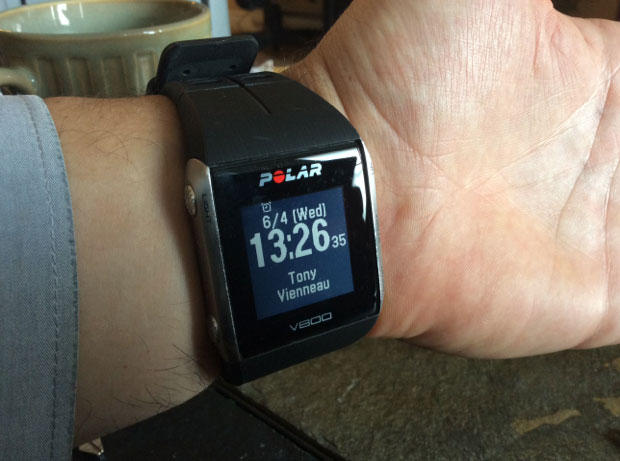
The V800 is compatible, or will be, with nearly every BTLE device on the market. I often use the Mio Link on runs and bike rides without issue. It also works with the Wahoo Speed and Cadence. However, it should be noted that only the Polar Heart Rate monitor will work with the orthostatic testing and measuring heart rate in the water. The ability to measure heart rate in the water was another of those surprises with the V800 that I have enjoyed taking advantage of.
The V800 provides all of the tools I was using in my 910xt during run sessions with the addition of extremely fast GPS location and locking and graphing HR training zones at any time during a run. Test runs have showed nearly identical readings for distance and pace; however, the V800 will show your current pace much faster without a lag that 910xt would have so it appears smoother. I do prefer the Garmin foot pod to the Polar foot pod only for size reasons. Also, the Jump Test for the V800 currently can only be done with the Polar foot pod.
As of today, the Garmin 910xt dominates the Polar V800 in terms of swimming metrics, with the exception of monitoring heart rate. I believe that V800 will provide all of the same metrics currently available with the Garmin 910xt, but since I haven't been able to test this aspect, I don't think it is fair to comment further.
Probably the most controversial and heated topic with the V800 is the cycling metrics. Since the V800 only accepts BTLE, the majority of power meters on the market can't be used with the V800 without third-party assistance. There is very detailed and heated thread on the ST forums on this very topic. I certainly understand both points of view on this matter. As easily as I can blame Polar for being BTLE only, I can say the same for Quarq and SRM for being Ant+ only. Even Powertap is converting to BTLE. DC Rainmaker has suggested that a product from 4iiii may be the answer to this problem and translate Ant+ to BTLE and solve this issue. I'm waiting to test this theory for myself. The ability to analyze power metrics is not yet available on Polar software and is scheduled for a firmware update.
Although I am only touching on The Big 3, the V800 has numerous sport profiles and metrics that can be easily personalized via Polar Flow. The Polar software, both the App and online versions, is well quite impressive. I was most impressed by the Polar App that allows for syncing and analyzing of data while offline. With use of BTLE, the V800 can sync to my Ipad without any internet connection and the data transfer is fast. I can then immediately analyze my more performance. Below are a couple of screen captures:
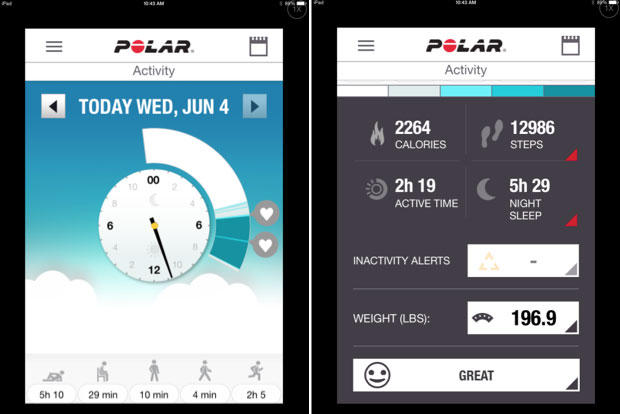

I also can see the results from my daily activity tracker, past workouts, future workouts, all without internet connection (Note the 5hrs sleep. This will relate to the wishes discussed later).
The online version of Polar Flow goes even further with some very nice features including uploading brick workouts as a single event (finally), and a fun feature called ‘relive' where they create a mini video of your performance. Although the Polar App and online Polar Flow are Beta, they have already surpassed Garmin Connect. Here are some Polar Flow screen captions showing recovery information, orthostatic test results, and calendar information:
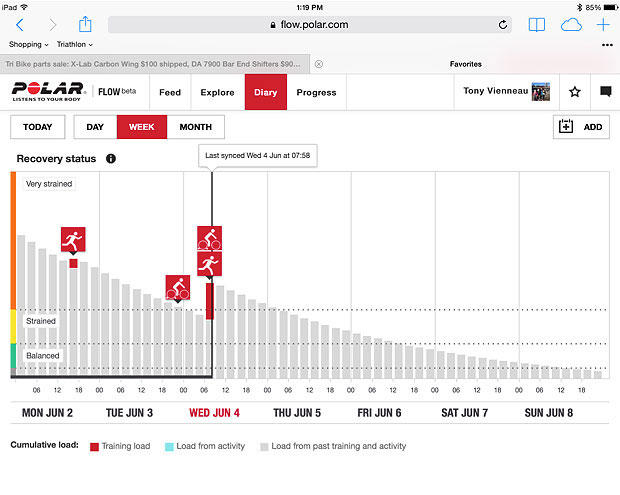
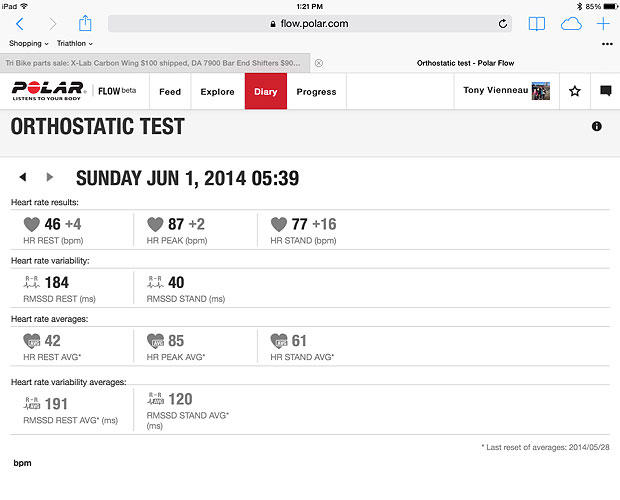
Below is also a screen shot from the online version of Polar Flow but it has been a request of many of us for years on Training Peaks and Garmin Connect, merge our workouts on a single screen. Finally, someone has listened:
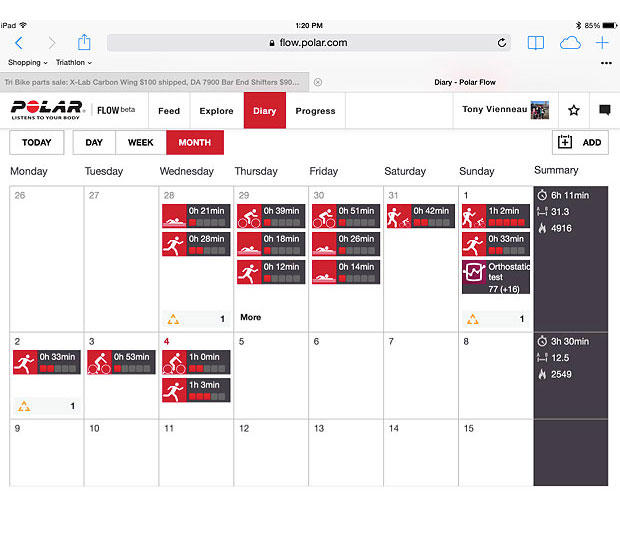
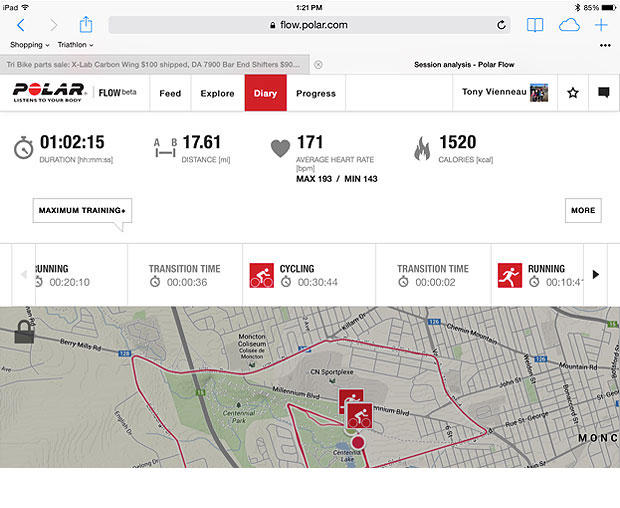

In terms of some of my wishes as the V800 moves forward, obviously the swimming and data sharing metrics timelines are met is first and foremost, the data sharing within programs like Strava and MyFitnessPal, and my wife requested a vibrate only alarm for those 4:00am trainer rides before our soon-to-be three kids wake up.
When you are deciding, it is important to remember that Polar is not a new and upcoming company. A lot of the current criticisms relate to metrics and firmware issues that are not yet ready. I agree, it would be nice that a device is released ready-to-go, however, I'm confident enough that the scheduled release dates for swimming metrics, BTLE power meter data, Android compatibility, and data sharing scheduled for September 2014 will occur. I don't think any of us has seen a released product ready-to-go (e.g. Fenix2), so I am not as bothered by this as others. I believe this is offset by Polar's customer service to date and they have been quick to answer questions on ST and the Polar Forum.
So, if you are part of the ‘it depends' group, I believe the question comes down to this, "Do I have the funds to upgrade my current 910xt and do I believe Polar will keep their word regarding firmware updates". If you answered yes, I hope you enjoy your new V800.


